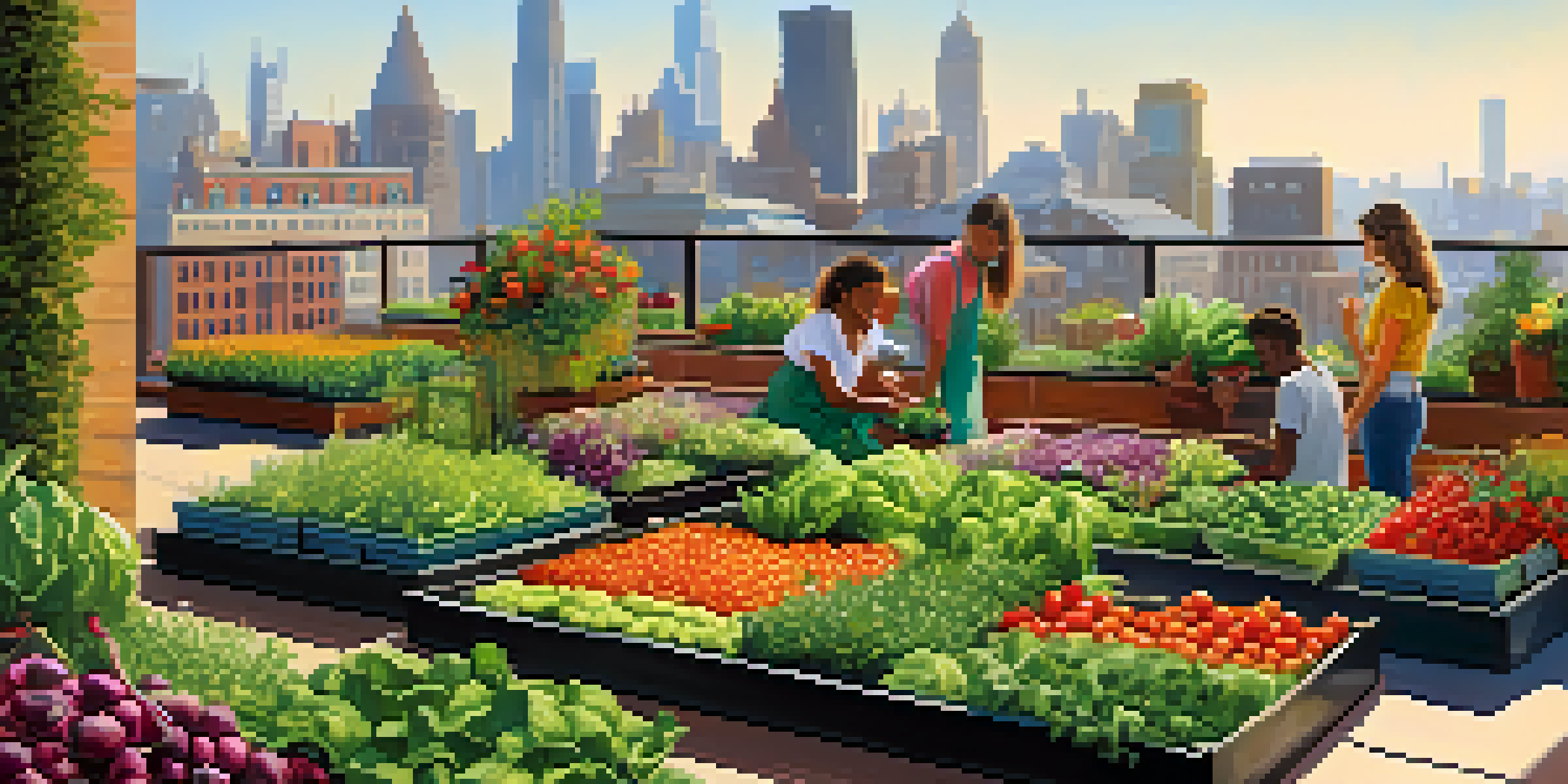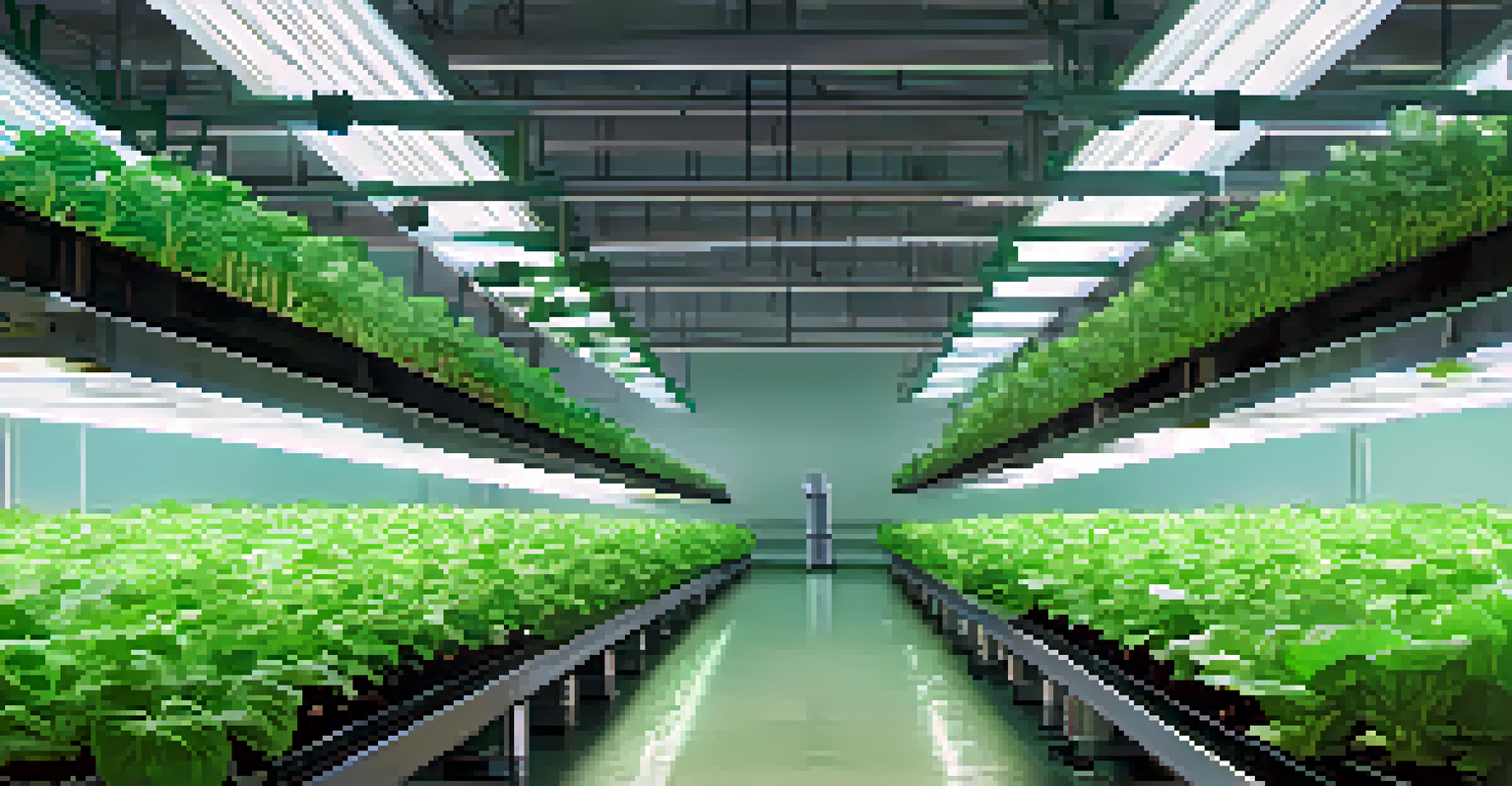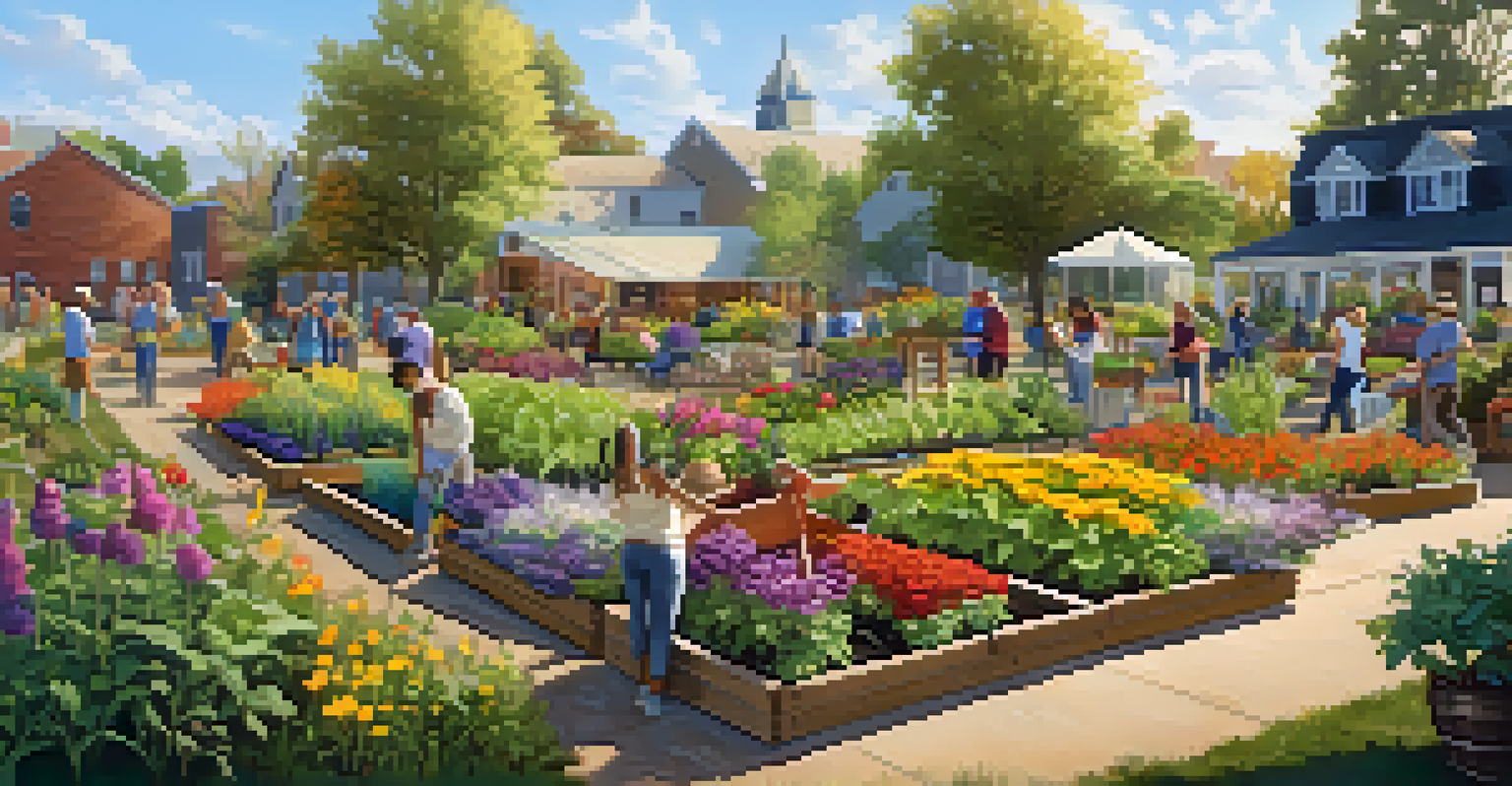Sustainable Agriculture Practices for Urban Environments

Understanding Sustainable Agriculture in Urban Areas
Sustainable agriculture focuses on farming practices that meet current needs without compromising future generations. In urban environments, this means adapting traditional farming techniques to fit smaller, often crowded spaces. With a growing population in cities, innovative solutions are essential to ensure food security and environmental health.
The greatest threat to our planet is the belief that someone else will save it.
Urban areas often face unique challenges such as limited space and soil quality. However, these challenges can lead to creative solutions like rooftop gardens and vertical farming. By utilizing these methods, cities can not only provide fresh produce but also enhance biodiversity and reduce the urban heat island effect.
Additionally, sustainable agriculture in urban settings can foster community engagement. Community gardens and urban farms bring people together, promoting social interaction and a shared connection to food sources. This communal aspect plays a vital role in encouraging environmental stewardship among city dwellers.
The Benefits of Vertical Farming in Cities
Vertical farming is a game-changer for urban agriculture, allowing crops to be grown in stacked layers. This innovative approach maximizes limited space, making it possible to produce significant yields in small footprints. Furthermore, vertical farms can be located closer to consumers, reducing transportation costs and emissions.

One of the most appealing aspects of vertical farming is its potential for year-round crop production. Controlled environments protect plants from extreme weather and pests, allowing for consistent growth. This reliability can help stabilize food supplies in cities, particularly during times of scarcity.
Urban Agriculture Enhances Food Security
Innovative methods like vertical farming and rooftop gardens are crucial for ensuring food security in densely populated urban areas.
Moreover, vertical farming often employs hydroponic or aeroponic systems, which use significantly less water than traditional farming methods. By recycling water and nutrients, these systems support sustainable practices while also conserving valuable resources, making them an ideal choice for urban settings.
Rooftop Gardens: Transforming Urban Spaces
Rooftop gardens are increasingly popular in urban areas, transforming unused spaces into lush green oases. Not only do they provide fresh produce, but they also offer numerous environmental benefits, such as improved air quality and reduced stormwater runoff. By turning rooftops into gardens, cities can mitigate some effects of urbanization.
Sustainable agriculture is a way of farming that can sustain the health of the land and the people who depend on it.
These gardens can vary in size and complexity, ranging from small container gardens to expansive green roofs. They can be designed for personal use or as community initiatives, fostering collaboration among residents. In addition to food production, rooftop gardens can serve as recreational spaces, improving the quality of life for urban dwellers.
Moreover, rooftop gardens can significantly lower energy costs by providing natural insulation for buildings. This dual purpose makes them an attractive option for city planners and homeowners alike, further encouraging sustainable practices in urban environments.
Community Gardens: Cultivating Connections
Community gardens are a wonderful way to engage residents in sustainable agriculture. These shared spaces allow individuals to grow their own food while fostering a sense of community and belonging. In a world where many people feel disconnected, these gardens can serve as a hub for social interaction and collaboration.
Beyond the social benefits, community gardens also contribute to urban biodiversity. By planting diverse crops and native plants, these gardens can attract pollinators and other beneficial species. This, in turn, helps create a healthier urban ecosystem and supports local wildlife.
Community Gardens Foster Connections
Community gardens not only promote sustainable practices but also strengthen social ties among residents, creating a sense of belonging.
Additionally, community gardens often prioritize education, offering workshops and resources to teach residents about sustainable practices. This emphasis on learning empowers individuals to make informed decisions about their food and environmental impact, ultimately leading to a more sustainable urban lifestyle.
Permaculture Principles for Urban Agriculture
Permaculture is a design philosophy that emphasizes working with nature rather than against it. In urban agriculture, permaculture principles can guide the creation of resilient and self-sustaining systems. This approach promotes harmony between the environment and the community, leading to more sustainable urban food systems.
Key permaculture practices include observing local ecosystems, using native plants, and designing gardens to maximize energy and resource efficiency. By applying these principles, urban farmers can create productive spaces that require less input while yielding more output. This not only benefits the farmers but also the broader community and environment.
Moreover, permaculture encourages the use of organic practices and reduces reliance on synthetic fertilizers and pesticides. By fostering soil health and biodiversity, urban gardens can thrive while minimizing their ecological footprint. This holistic approach is essential for building resilient cities that can adapt to future challenges.
Hydroponics: Soil-less Solutions for Urban Farming
Hydroponics is an innovative method of growing plants without soil, using nutrient-rich water instead. This technique is particularly well-suited for urban environments where space is limited and soil quality may be poor. By utilizing hydroponics, urban farmers can grow a wide variety of crops indoors or on rooftops, maximizing their productivity.
One of the significant benefits of hydroponics is its efficiency in resource use. This method typically consumes less water than traditional farming, as the water is recirculated through the system. Additionally, hydroponics allows for precise control over nutrient delivery, leading to faster growth rates and higher yields.
Technology Boosts Urban Farming Efficiency
The integration of smart farming technologies is revolutionizing urban agriculture, enabling more efficient practices and better resource management.
Furthermore, hydroponic systems can be integrated into existing urban spaces, such as schools or businesses, promoting local food production. By making fresh produce accessible to city dwellers, hydroponics supports healthier eating habits and reduces the carbon footprint associated with transporting food over long distances.
The Role of Technology in Urban Agriculture
Technology plays a crucial role in the advancement of sustainable urban agriculture. From apps that connect local farmers with consumers to sensors that monitor soil health, innovative solutions are making urban farming more efficient and accessible. This technological integration is essential for meeting the growing food demands of urban populations.
Smart farming techniques, such as precision agriculture, allow urban farmers to optimize their practices based on real-time data. By analyzing factors like moisture levels and plant health, farmers can make informed decisions that enhance productivity while minimizing waste. This data-driven approach is revolutionizing how urban agriculture operates.

Moreover, the rise of indoor farming technologies, including LED grow lights and climate control systems, enables year-round cultivation regardless of external conditions. These advancements not only increase the availability of fresh produce in cities but also contribute to reducing the environmental impact of food production.
Conclusion: The Future of Urban Agriculture
The future of urban agriculture looks promising as cities increasingly recognize the importance of sustainable practices. By embracing innovative methods such as vertical farming, rooftop gardens, and hydroponics, urban areas can enhance food security while promoting environmental sustainability. These practices also foster community connections and encourage healthier lifestyles.
As technology continues to evolve, urban agriculture will likely become more efficient and widespread. The integration of smart farming solutions will empower individuals and communities to take charge of their food systems, leading to a more resilient urban landscape. This transformation is essential as cities confront challenges related to population growth and climate change.
Ultimately, sustainable agriculture practices in urban environments offer a pathway to a greener, healthier future. By prioritizing collaboration, education, and innovation, cities can cultivate vibrant communities that thrive on locally produced food while nurturing the planet.